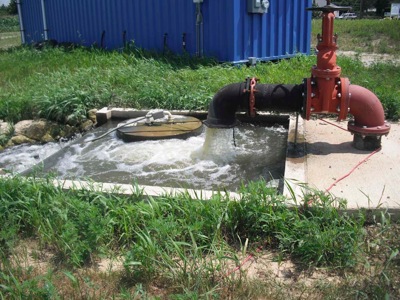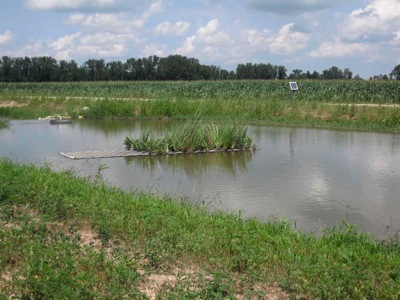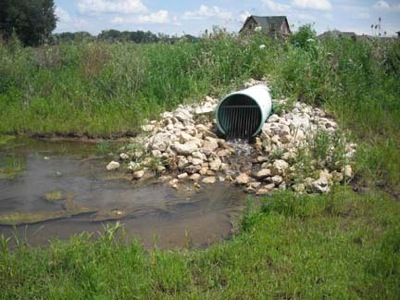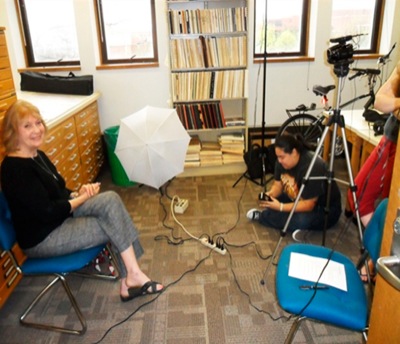Friday, September 27th, 2013
Lake treatment train to be unveiled for public viewing
By Nancy Allen

Photo by Nancy Allen/The Daily Standard
This drawline at the beginning of the treatment train diverts a small portion of water from Prairie Creek into a series of man-made retention ponds and wetlands.
The area's first water cleansing treatment train at Prairie Creek will debut to the public next weekend.
The site can be toured from 1 to 5 p.m. Oct. 5 and 6 on the south side of Grand Lake along state Route 219, east of Kittle Road. State officials and invited guests will attend a dedication ceremony at 11:30 a.m. Tuesday.
The estimated $2.5 million treatment train diverts a small amount of water from Prairie Creek and treats it with alum, a chemical that deactivates phosphorous, the favorite food of the lake's toxic blue-green algae. The water is then funneled through two retention ponds and six manmade wetland cells before it enters the lake.
Much of the natural wetlands around the 13,500-acre lake was destroyed over the years due to development. Wetlands act as kidneys to filter out sediment and nutrients.
Milt Miller, manager of the Lake Restoration Commission, said tests of the water leaving the treatment train are promising. Results will be presented Tuesday during the dedication.
"The treatment train was a pilot on the effectiveness of purifying the water coming into the lake," Miller said. "It dropped phosphorous, it dropped nitrogen and in terms of microcystins (algae toxins), it was non-detectable coming out."
Miller said officials hope to build treatment trains on all five of the lake's main tributaries to reduce phosphorous runoff. This is the fifth consecutive year the lake has been under a state-issued water advisory due to unsafe algae toxin levels.
Funding for the project has come from the Ohio Department of Natural Resources, grants from the Ohio EPA and Ohio Public Works Commission, in-kind services and private donations.
A drawline pumps 900 gallons of water per minute from the creek (30 million gallons a month) at the mouth of the treatment train, Miller said. A blue building houses three, 1,700-gallon storage tanks and a pump that conveys the alum into the retention ponds that connect to the wetland cells. Thousands of wetland plants that take up nutrients were planted in the cells.
Miller noted a once small area of lily pads have "exploded" along the lake shore where the cleansed water empties into the lake.
"The area was just a small colony (in May) before we started giving it clear, healthy water," he said.
Miller also noted an abundance of cattails between an island and the shoreline that also has expanded.
Local officials learned earlier this year that $2.1 million from ODNR was included in the Ohio budget to build a second treatment train on Coldwater Creek. The project is in the design stage and will be constructed at the state wildlife refuge near U.S. 127 and state Route 703, he said.
"Our goal is to march around the lake and do more of these," Miller said.
Attending Tuesday's dedication of the Prairie Creek treatment train will be ODNR Director Jim Zehringer, Ohio EPA Director Scott Nally, Ohio Department of Agriculture Director David Daniels and State Rep. Jim Buchy, R-Greenville.
How to go:
What: Prairie Creek treatment train public open house
Where: State Route 219, east of Kittle Road, near Aqua View Estates housing subdivision
When: 1-5 p.m. Oct. 5 and 6

Photo by Nancy Allen/The Daily Standard
Floating wetland plants have been placed in sections of the treatment train to further take up nutrients from the creek water.

Photo by Nancy Allen/The Daily Standard
Water exits a pipe into a natural wetland area at the end of the Prairie Creek treatment train.





